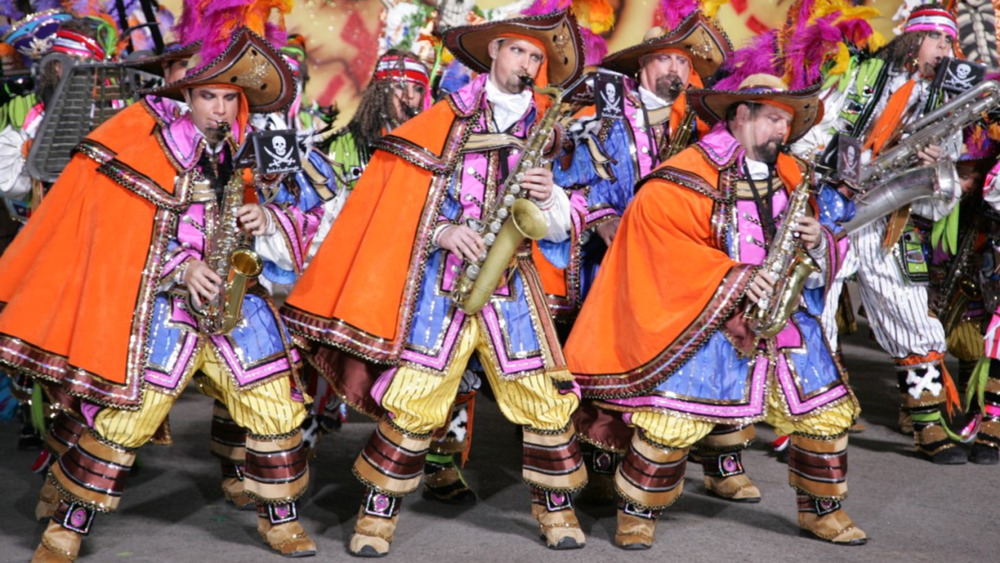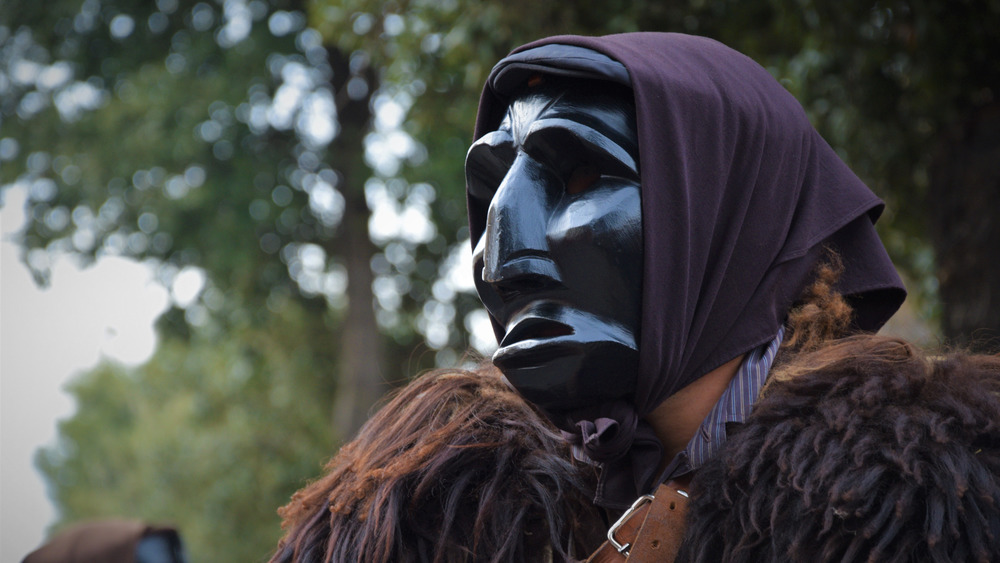The Unique Medieval Christmas Tradition That's Still Practiced Today
Every Christmas season in the Canadian provinces of Newfoundland and Labrador, groups of costumed revelers can be found roaming the streets, hiding their identities under masks, sheets, curtains, and even padding to thoroughly disguise their faces and bodies. Hand-crafted hobby horse heads are a popular mask, and many people also bring along a traditional "ugly stick," a four-foot long instrument crafted by attaching bells, bottle caps, tin cans, and other noisy decorations to a stick, according to Newfoundland Labrador.
Like a hybrid between Halloween and Christmas, people disguise themselves and go door to door, visiting friends and neighbors. Once they are invited inside, it is up to the mummers to entertain their hosts, performing little plays, dancing, singing, or making jokes. Their friends and neighbors then poke and prod their costumed guests, trying to guess their real identity. Once they are successfully recognized, everyone enjoys snacks and libations before moving on to the next house.
This tradition, called mummering, dates all the way back to Medieval England and Ireland, when Christmas celebrations were a time for drunken revelry. For Medieval people, the Advent season was a time of preparation and penance. This meant they abstained from luxuries like rich food, alcohol, gambling, and even sex, says the CBC. On Christmas Day, the penance was over and it was time to party. Beginning on December 25 and extending all the way until Epiphany on January 6, people were free to feast, drink, kiss, and generally carouse and cause trouble.
Mummers could have a violent streak
As part of the celebrations, rowdy groups of drunken partiers would sometimes put on silly costumes and visit friends and neighbors. Some mummers would put on Christmas plays, going door-to-door to fundraise for their performances, according to Atlas Obscura. As the British migrated and settled in new parts of the world, the mummering tradition spread with them.
In the 19th century, English and Irish sailors brought the practice of mummering to Newfoundland, where it quickly caught on with the locals, according to the The Guardian. They quickly embraced the practice, but it wasn't always cheerful, wholesome good fun. Drunken groups of mummers could get violent, and the tradition was eventually banned after a group of mummers beat a man to death in 1861.
By the early 1980s, however, a revival was underway in Newfoundland and Labrador. While it was still illegal until the 1990s, smaller, more rural parts of the province could get away with hosting their own mummers parties. In 2009, Newfoundland fully reinstated the mummering celebration, launching the St. John's Mummers Festival and parade. The revived Christmas tradition with Medieval roots is still going strong.

